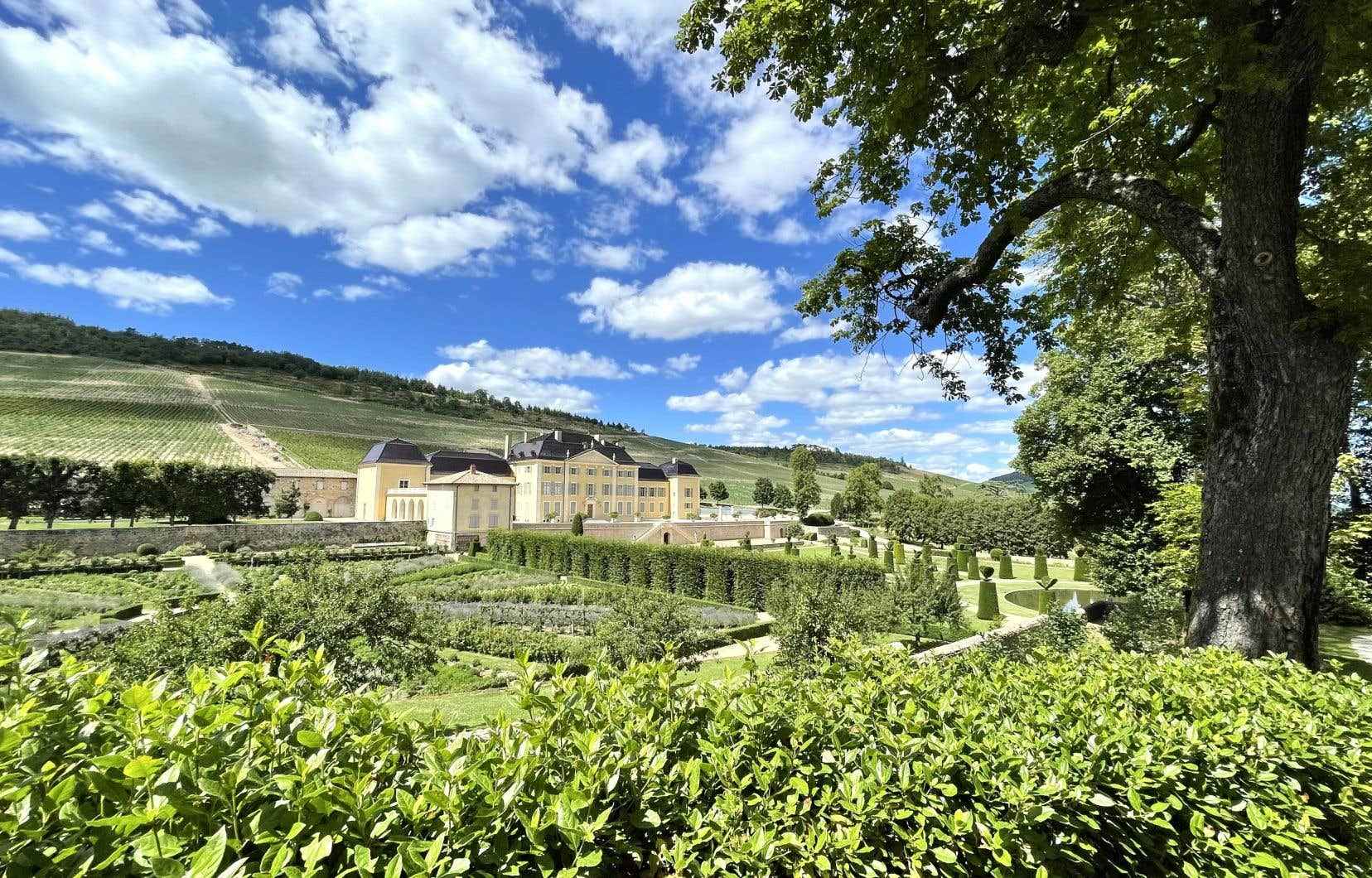This text is part of the special book Plaisirs
This special notebook on cheeses could not overlook their best friend, wine. Our journalist took a walk this year in the vineyards of Beaujolais, in France, and she invites you to do the same in order to stir all your senses!
First of all, there are those hilly landscapes, of which we speak too little. Far from the hustle and bustle of Lyon, Beaujolais extends its vines over 140 kilometers, from the north of the City of Light to the south of Mâcon. The visitor on the lookout has something for his retina. You never know what will appear at the bend of a country lane.
To fully understand what is under this bucolic decor and in our glasses, we take part in a guided tour offered by Tasty Lyon. On the program: a day that resembles a tasting, where our senses will be constantly tickled.
First, the view. Our guide, Yann Fabris, parks the vehicle behind a chapel perched in the middle of nowhere, in Saint-Laurent-d’Oingt. In front of us, the curves of the Land of Golden Stones invite exploration. What is hiding behind these pretty shades of green? Our host calmly installs a checkered tablecloth, bottles of wine and goblets on a low wall. On the map he then unfolds, the 12 Beaujolais appellations are clearly identified. “From Odenas to Saint-Amour, these are the crus,” he explains. Each has a specific geology and is named after the village where it was planted. »
Enough theory, it’s time for the taste buds to follow the chops. We start with a Chardonnay from Château de Pizay, followed by a rosé and a 100% Gamay red. There is frankly worse as a start to the day.
From Golden Stones to the Lords of Beaujeu
A walk in Oignt, ranked among the most beautiful villages in France, is a must. It’s not just wine in life! There are also windows with red shutters that contrast with the golden stones and streets with evocative names like Coupe Jarret and Trayne Cul. “Geology is very important in Beaujolais, whether it is the south or the north,” explains Yann Fabris. Here, we are more on clay-limestone soil. In limestone there is iron oxide. This is what will color the golden stone. It is the only region of France where this stone is found. »
A few minutes from the village, Dominique Guillard and his dog Mascotte are waiting for us at the Domaine de Fond-Vieille. The small 15-hectare winery has been in the family since 1742, according to research by a cousin. Some almost hundred-year-old vines were planted by the owner’s great-grandfather, on his return from the First World War.
Near Belleville-en-Beaujolais, the Château de Pizay wine bar, a sensory journey, allows you to test your knowledge. At the back, there is also a French garden.
Entering the enclosure of the castle of Montmelas, in the Beaujolais-villages, gives us the impression of crossing the centuries. “The castle was built in the Xe century by the lords of Beaujeu”, explains Delphine d’Harourt , Comte Henri d’Harcourt sales and estate manager. We would listen to her for hours telling the story of the region and her in-laws, owners of the castle since 1566. Generous, she does not skimp on any detail during the visit.
Is it the stone walls several hundred years old, the fact that, under our feet, the ground has gradually changed into a true creator of flavors or the effect of alcohol after several stops? In any case, at Château de Montmelas, the wines also seem to tell stories.
Wine 101 at Hameau Duboeuf
A new generation of winegrowers
This trip was made possible thanks to Air Transat, Atout France, Destination Beaujolais and Only Lyon.
This special content was produced by the Special Publications team of the To have to, pertaining to marketing. The drafting of To have to did not take part.
